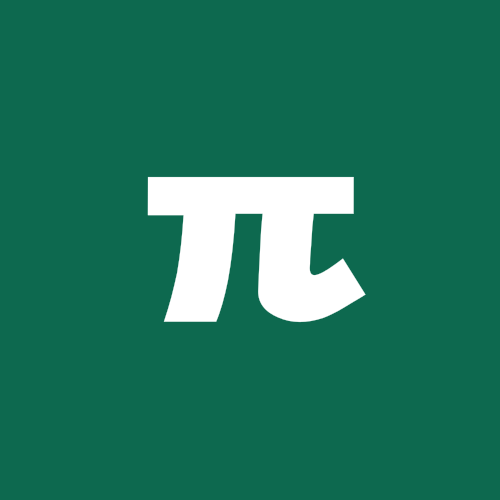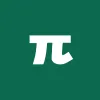In mathematical analysis, a sequence is a rule that associates to each natural number \( n \in \mathbb{N} \) an element \( a_n \) belonging to a set \( X \). In other terms, a sequence is a function defined on the set of natural numbers with values in \( X \).
Table of Contents
Definition
Formally, a sequence is defined as a function:
\begin{align} a \,\, : \,\, & \mathbb{N} \rightarrow X \\ & n \rightarrow a(n) \end{align}
In this definition, \( \mathbb{N} \) indicates the set of natural numbers, namely \( \mathbb{N} = \{ 0, 1, 2, 3, \dots \} \). The set \( X \) represents the codomain, which can be the set of real numbers \( \mathbb{R} \), complex numbers \( \mathbb{C} \), integers \( \mathbb{Z} \) or another numerical or non-numerical set.
The function \( a \) associates to each natural number \( n \) an element \( a(n) \) belonging to the set \( X \). The value \( a(n) \) is called the \( n \)-th term of the sequence and is usually denoted by \( a_n \), that is \( a_n = a(n) \). The term \( a_n \) therefore indicates the value assumed by the sequence corresponding to the index \( n \).
A sequence can be represented explicitly by the ordered list of its terms:
\[ a_0, a_1, a_2, a_3, \dots, a_n, \dots \]
The most commonly used notation to indicate a sequence is \( \{ a_n \}_{n \in \mathbb{N}} \) or, alternatively, \( (a_n)_{n \in \mathbb{N}} \). Both notations express the fact that the sequence is composed of the terms \( a_n \) for each \( n \in \mathbb{N} \).
In the case where the set \( X \) consists of real numbers \( \mathbb{R} \) or complex numbers \( \mathbb{C} \), the sequence is called numerical. More precisely, if \( X = \mathbb{R} \), the sequence is called a real sequence, while if \( X = \mathbb{C} \), we speak of a complex sequence.
For example, the sequence defined by \( a_n = \displaystyle \frac{1}{n} \) with \( n \in \mathbb{N} \setminus \{ 0 \} \) is a real sequence, since each term belongs to the set of real numbers.
Sequences can also have values in non-numerical sets. It is possible to define sequences of vectors, matrices or elements of an alphabet, depending on the context of study.
From a graphical point of view, numerical sequences can be represented by associating to each index \( n \) the corresponding value of the term \( a_n \). This representation allows us to visualize the behavior of the sequence.
For example, the sequence defined by \( a_n = n^2 \) can be represented graphically as a series of points, whose values increase following quadratic growth:
\[ 0, 1, 4, 9, 16, 25, \dots \]
Examples
Recursive Sequences
A recursive sequence is defined by specifying the initial values and a rule that allows calculating each successive term from the previous one. For example, the factorial of a natural number \( n \) is defined as:
\[ 0! = 1 \quad, \quad n! = n\cdot (n-1)! \]
Similarly, the power of 2 can also be defined recursively:
\[ 2^0 = 1 \quad , \quad 2^n = 2 \cdot 2^{n-1} \]
More generally, for each \( 0 \neq x \in \mathbb{R} \), we have:
\[ x^0 = 1 \quad , \quad x^n = x\cdot x^{n-1} \]
Another common example is the Fibonacci sequence, defined as:
\[ F_0 = 0, \quad F_1 = 1 \quad , \quad F_{n+2} = F_{n+1} + F_n \]
Finite Sequences
A finite sequence is defined as a sequence consisting of a finite number of terms, that is if there exists an \( N \in \mathbb{N} \) such that \( a_n \) is defined only for \( n \leq N \). Conversely, we speak of an infinite sequence if \( a_n \) is defined for each \( n \in \mathbb{N} \).
Infinite sequences are those most commonly used in mathematical analysis and represent an essential tool for the study of series, functions and limits.
Monotonic Sequences
A sequence is said to be monotonic if its terms maintain a constant behavior, that is if they are non-decreasing or non-increasing. The monotonicity of a sequence can manifest itself in two distinct forms.
Increasing Sequence
An increasing sequence is defined as a sequence in which each term is less than or equal to the next term. Formally, the sequence \( \{ a_n \} \) is increasing if:
\[ a_n \leq a_{n+1} \quad \forall n \in \mathbb{N} \]
If the inequality is strict, that is if \( a_n < a_{n+1} \) for each \( n \), the sequence is said to be strictly increasing.
Example: The sequence \( a_n = n \) is strictly increasing, since:
\[ 0 < 1 < 2 < 3 < \dots \]
Decreasing Sequence
A sequence is said to be decreasing if each term is greater than or equal to the next. Formally:
\[ a_n \geq a_{n+1} \quad \forall n \in \mathbb{N} \]
If the inequality is strict, that is if \( a_n > a_{n+1} \) for each \( n \), the sequence is said to be strictly decreasing.
An example of a decreasing sequence is \( a_n = \displaystyle \frac{1}{n} \), which takes the values:
\[ 1, \frac{1}{2}, \frac{1}{3}, \frac{1}{4}, \dots \]
Bounded Sequences
A sequence \( \{ a_n \} \) is said to be bounded if there exists a real number \( M \) such that:
\[ |a_n| \leq M \quad \forall n \in \mathbb{N} \]
In this case, \( M \) is called an upper bound of the sequence. If instead:
\[ m \leq a_n \leq M \quad \forall n \in \mathbb{N} \]
then the sequence is said to be bounded above and below, where \( M \) is an upper bound and \( m \) a lower bound.
For example, the sequence \( a_n = (-1)^n \) is bounded, since its terms oscillate between \( -1 \) and \( 1 \).
Unbounded Sequences
A sequence is said to be unbounded if its terms grow or decrease indefinitely. Formally, \( \{ a_n \} \) is unbounded if:
\[ \forall M \in \mathbb{R}, \; \exists n \in \mathbb{N} \quad : \quad |a_n| > M \]
An example is the sequence \( a_n = n \), which is not bounded above.
Oscillating Sequences
An oscillating sequence is defined as one whose terms do not tend to stabilize nor to grow or decrease monotonically, but vary continuously.
For example, the sequence \( a_n = (-1)^n \) oscillates between \( 1 \) and \( -1 \) without converging to a definite value.
This sequence is both oscillating and bounded.
Constant Sequences
A constant sequence is a particular case of monotonic sequence in which all terms are equal. Formally, a sequence is constant if:
\[ a_n = c \quad \forall n \in \mathbb{N} \]
A simple example is the sequence \( a_n = 5 \), which produces the list:
\[ 5, 5, 5, 5, \dots \]
This sequence is both monotonic increasing and decreasing at the same time, and is also bounded.
Periodic Sequences
A sequence is said to be periodic if there exists a natural number \( T > 0 \) such that:
\[ a_{n+T} = a_n \quad \forall n \in \mathbb{N} \]
The minimum value of \( T \) for which this property holds is called the period of the sequence.
An example of a periodic sequence is \( a_n = \sin\left(\frac{2\pi n}{3}\right) \), which has period 3.

